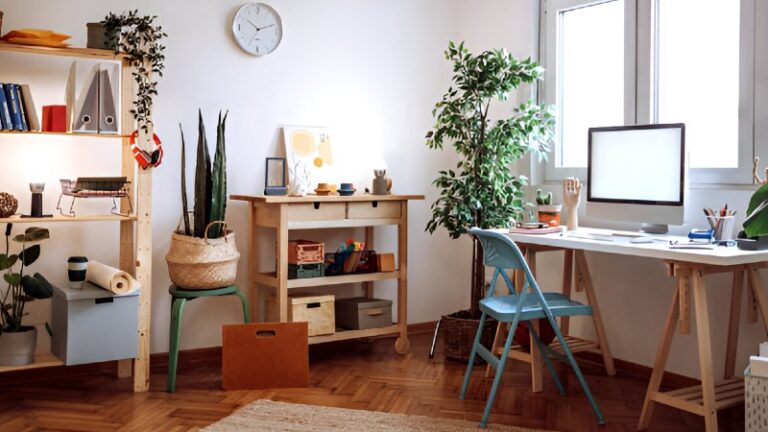Why Minimalism Matters in Modern Living
Research from the Princeton University Neuroscience Institute shows that clutter competes for your attention, reducing performance and increasing stress. Minimalist homes counteract this by streamlining possessions and creating clear visual spaces that allow the brain to focus. In other words, a tidy home isn’t just visually pleasing—it can make you feel calmer and more productive.
Core Principles of a Minimalist Sanctuary
Minimalism is not about deprivation; it’s about prioritizing what adds value. Below are key principles to guide your transformation:
- Intentional Choices: Every item should have a purpose or bring joy.
- Quality Over Quantity: Invest in durable, timeless pieces instead of trendy, short-lived décor.
- Mindful Consumption: Adopt the one in, one out rule to prevent clutter from creeping back.
- Well-Being First: Arrange spaces to promote relaxation, focus, and ease of movement.
Step-by-Step Approach to Designing Your Minimalist Home
1. Define Your Vision
Start by asking: What do I want my home to feel like? For some, it may be a serene retreat after work. For others, a clean space that boosts focus. Writing down your vision ensures every design decision aligns with your goals.
2. Smart Decluttering
Decluttering remains central, but think of it as a structured process rather than a weekend purge:
- Start small: Begin with one drawer or surface to avoid overwhelm.
- Sort into categories: Keep, Donate/Sell, Recycle.
- Ask guiding questions: Does this serve me now? Would I buy it again today?
Example: A minimalist kitchen might keep three high-quality knives instead of a cluttered block of twelve, ensuring functionality without excess.
3. Storage That Works for You
Minimalism is not about empty spaces it’s about hidden organization:
- Use vertical shelving for books and décor.
- Choose beds with built-in drawers or ottomans with compartments.
- Label baskets and bins to reduce decision fatigue.
4. Optimize with Low-Maintenance Design
One overlooked perspective in minimalism is choosing finishes and materials that reduce upkeep. This ensures your sanctuary remains effortless:
| Space | Low-Maintenance Choice | Benefit |
|---|---|---|
| Flooring | Vinyl or laminate | Durable, easy to clean |
| Walls | Semi-gloss paint | Wipeable, resists stains |
| Furniture | Exposed legs, washable covers | Easy vacuuming & upkeep |
5. Light and Atmosphere
Natural light is a cornerstone of a minimalist sanctuary. Use sheer curtains, mirrors, and reflective surfaces to brighten rooms. Consider dimmable LEDs to create calming evening moods. Studies show that natural light improves mood and productivity, making it both a design and health choice.
Digital and Emotional Clutter
Minimalism isn’t confined to physical belongings. A true clutter-free sanctuary addresses digital and emotional clutter as well:
- Digital: Unsubscribe from spam emails, organize files into clear folders, and limit distracting notifications.
- Emotional: Let go of items tied to guilt or outdated identity. For example, donating hobby equipment from a past phase can be liberating.
Psychological Benefits of Minimalist Living
Minimalism is more than aesthetic—it impacts mental health. According to UCLA’s Center on Everyday Lives of Families, high household clutter correlates with elevated cortisol (stress hormone) levels. By simplifying, you’re not just creating a prettier home; you’re actively reducing stress.
Key Benefits
- Improved focus by reducing visual distractions.
- Better sleep with calm, uncluttered bedrooms.
- Enhanced financial well-being through mindful purchasing.
Examples of Minimalist Rooms
Minimalist Living Room
Neutral sofa with washable slipcovers, a single wooden coffee table with storage drawers, and two plants for natural warmth. Wall-mounted shelves replace bulky bookcases.
Minimalist Bedroom
Platform bed with under-storage, soft lighting, and muted bedding colors. Nightstands hold only essentials—lamp, book, and phone charger.
Minimalist Home Office
Desk with cable management, ergonomic chair, and a single monitor setup. Decluttered surfaces boost productivity for hybrid workers.
Tips for Maintaining a Minimalist Sanctuary
Creating a minimalist home is only half the journey—maintaining it requires habits:
- Daily reset: Spend 10 minutes tidying shared areas.
- Monthly audit: Reassess clothes, décor, or digital files.
- Mindful purchases: Before buying, ask: Will this add lasting value to my life?
- Family participation: Share routines so upkeep doesn’t fall on one person.
Conclusion
A minimalist home isn’t about stark spaces or rigid rules it’s about creating a calm, clutter-free sanctuary that reflects your values and supports your daily life. By combining intentional design, low-maintenance materials, and habits that prevent clutter from creeping back, your home can truly become a place of peace and purpose. Less mess, less stress and more room for what matters most.
Frequently Asked Questions (FAQs)
What is a minimalist home?
A minimalist home focuses on simplicity, intentional living, and reducing clutter while keeping functional and aesthetically pleasing elements.
How do I start decluttering my home?
Begin by sorting items into categories: keep, donate/sell, and discard. Tackle one room or area at a time and apply the “one in, one out” rule to prevent future clutter.
What materials are best for a low-maintenance minimalist home?
Opt for easy-to-clean materials like vinyl or laminate flooring, semi-gloss paint, and furniture with washable covers or exposed legs for easier cleaning.
How does a minimalist home improve mental well-being?
By reducing visual clutter and creating organized spaces, minimalist homes can lower stress, improve focus, and enhance sleep quality.
Can families with children maintain a minimalist home?
Yes, by establishing routines like daily resets, using smart storage solutions, and involving everyone in tidying up, families can maintain a clutter-free, functional space.
What role does natural light play in a minimalist home?
Natural light creates a sense of openness, reduces the feeling of clutter, and contributes to a calm and inviting atmosphere.


